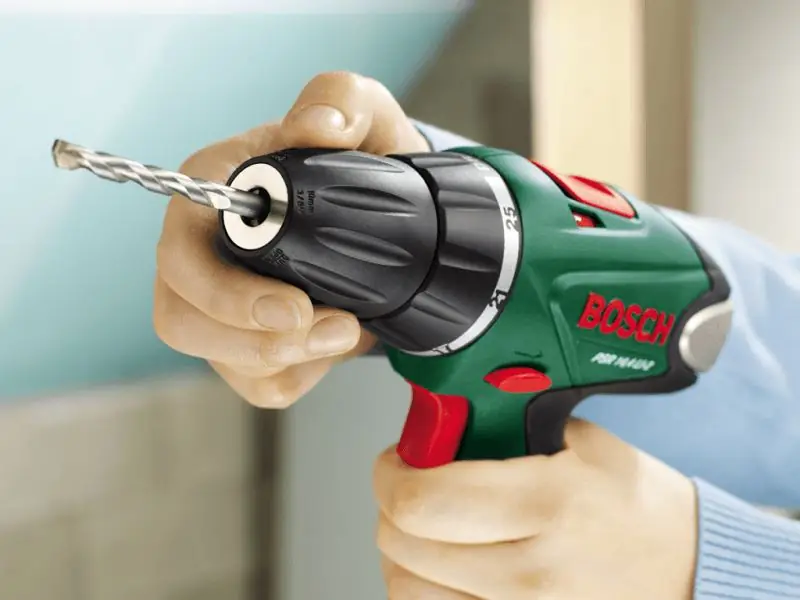
Table of contents:
- Author Bailey Albertson [email protected].
- Public 2023-12-17 12:53.
- Last modified 2025-06-01 07:32.
How to choose a hair dryer

More and more materials require the use of a building hair dryer - in everyday life these are heat-shrinkable tubes in electrical connections, thermal seals for plastic windows, dyes baked at specified temperatures, etc. In the professional world of construction and installation, a building hair dryer is used to glue, solder and heat materials to the required temperatures … To use this tool correctly, you need to know its technical and operational characteristics.
Content
-
1 What is a hair dryer
- 1.1 Design and principle of operation
-
1.2 Additional adjustments
1.2.1 Video: Interskol hair dryer device
- 2 Types of hair dryers and their characteristics
- 3 How to choose a building hair dryer
- 4 Instructions for use and safety precautions
-
5 Major malfunctions of the hair dryer and how to fix them
- 5.1 Video: repairing a construction hair dryer
- 5.2 Video: repair of the Liget LHG 2000 construction hair dryer
- 6 Care of the building hair dryer
What is a hair dryer
A hair dryer is a power tool designed to blow hot air in a given direction. Its distinguishing feature (in comparison with a heat gun, for example) is the ability to heat exactly a given place. The blowing area can vary from 5 to 25 cm 2. Various attachments are designed to format the outgoing stream and allow the device to be used for various household and construction purposes.
Unlike household hair dryers, which are designed mainly for drying hair and heat the air to a temperature of 60-62 o C, a building hairdryer gives an outlet temperature of 300 to 650 o C. This is comparable to the burning temperature of wood or peat. However, unlike the gases obtained as a result of fuel combustion, the hot air from the hair dryer comes in directed and at a high speed, which creates an additional heating effect.

You can even solder PCBs with a hot air gun
Some models reach a power of more than 2000 W and develop temperatures up to 800 o C. It is impractical to use them in the household, since the dimensions, weight and price are too large. In addition, the operation of such a tool is associated with high energy consumption.
Another important indicator of the performance of a hot air gun is the volume of air passing through the device per minute. It can range from 200 to 600 liters. The higher this indicator, the greater the productivity of the tool.
The construction hair dryer is used in many industries. In some cases, it supplanted traditional electric heating devices. For example, the blow dryer completely replaced the rod soldering irons in the soldering stations. Due to its small size, precise and smooth temperature control, the use of fine nozzle tips, the tool is used in the production and repair of printed circuit boards. Such equipment is much cheaper than infrared ovens. The work of the installer is greatly facilitated and accelerated.
The main scopes of the electric building hair dryer.
- Drying of paints and varnishes, adhesive and putty materials. This is especially true of those cases when local impact is needed.
- Heating up composite and adhesives. There are options for heating the workpiece both before application and directly on the treated surface.
- Heating up metal threaded connections before dismantling. The oxidized thread heats up from the outside, this contributes to the rapid expansion of the metal, disassembly is greatly facilitated.
- Softening and removing the adhesive layer. Under the influence of high temperature, the bonded surfaces separate.
- "Firing" paints or varnishes in order to remove them. Especially effective on wooden surfaces.
- Heating up heat-shrink insulators, for example, for connecting electrical conductors.
- Heat treatment of thermoplastic parts. Heating such materials allows you to give them the desired shape. An example is pipe fit and bend.
- Welding of polymer parts made from a homogeneous material.
- Heating up the coolant in water pipes during freezing.
- Heated epoxy and polyester resins to speed up drying and hardening.
- Installation of thermoplastic sealants.
-
Lighting charcoal in ovens, barbecues, etc.

The use of a hair dryer in construction The versatility of the device is determined by the presence of various attachments in the kit
Device and principle of operation
All building hair dryers, however, like household ones, have a similar device. The differences lie in the power and availability of additional options. The working body of the tool consists of a piece of small pipe (up to 50 mm) in diameter. It has a built-in fan that blows air and an electric heater. For the convenience of the user, the device is equipped with a pistol grip.

The electric motor blows air onto the thermocouple, where it heats up, and then at high speed flies out through the nozzle
According to the principle of operation, a building hair dryer is similar to a wind tunnel. Air is sucked in from the environment and directed to the heater, after which it is thrown out at high speed in the desired direction. The spray pattern can be changed using different nozzles. In order to prevent foreign objects (hair, small debris, fingers) from getting into the device under the influence of air draft, the end of the pipe is closed with a protective grid.

To repair and service the hair dryer, you must remove the top cover of its body
Additional adjustments
Based on production needs, additional devices and adjustments have been developed for the basic model. These options include:
-
Air flow temperature control. Amateur models have 2 or 3 fixed positions. The professional instrument is equipped with a multi-stage thermoregulation system. Execution can be slider (manual) or electronic. With this device, the user is able to work with various materials. The selection of the optimal heating mode speeds up the processing of parts.

Air temperature regulator Air flow temperature switch can be manual or electronic
-
Air volume regulation. Fits on professional models for small and lightweight parts. Also used when spot heating of a small area is required. The change in air flow is regulated by manual adjustment using an electronic unit that controls the operation of the fan.

Air volume regulator The air volume regulator is indicated by a propeller-shaped pictogram
- Intake air filter. It is very relevant for work in conditions of increased dustiness. Large amounts of fine dust entering the heating element of the tool can cause rapid breakage. Timely replacement of the air filter is guaranteed to protect the hair dryer from burnout. Installed in the inlet after the protective grill.
- Thermostop function - protection of the hair dryer from overheating. Often triggered when working at right angles to the work surface. Hot air is reflected from the plane of the part and rushes back into the heating device. An automatic system turns off the thermocouple when the permissible temperature is exceeded.
-
Control indication on the case. Allows you to control the process of heating the material when performing delicate work. There are LED and screen indicators.

Heating indicator LED indication reflects the air temperature during the operation of the hair dryer
- Parking devices. Some models designed for long-term use are equipped with various add-ons to make it easier to install the hair dryer during breaks. The fact is that this device is sensitive to falls - dropping it from a height of human growth, the user risks breaking the ceramic cartridge of the spiral and damaging the spiral itself. A heated hair dryer must not be placed on its side, it is fraught with fire. Therefore, developers sometimes provide the tool with a special loop on the body so that it can be hung on a hook. Or they make the end of the suction pipe in such a way that the tool can stand in an upright position.
- Thermal protective casing. Despite the fact that the body of the building hair dryer is always made of heat-resistant material, in addition to this, a removable (or stationary) thermal protective cover is used. It is installed on the air pipe and can be removed if necessary. For example, when it is necessary to work in a narrow space and the reverse air flow can damage the operator and the hairdryer itself.
- Cold air operation. The possibility of completely turning off the heater is a big plus. In this case, it is possible not only to heat the workpiece, but also to cool it. This significantly reduces the cooling time of both the hair dryer itself (it can be blown out before packing) and the workpiece being processed. Technically, this possibility is achieved in two ways - by turning off the spiral or by using a second nozzle, which can work in parallel with the heating one. In the second case, it becomes possible to glue materials from thermoplastics with simultaneous cooling.
-
Air flow temperature stabilization. In other words, an electronic thermostat that maintains the set temperature of the air flow. As a rule, the system is installed on expensive professional class models. In addition to the comfort and speed of operation, this function helps to reduce the wear of the heating element. It is often accompanied by a built-in memory in which the last set temperature value is recorded. The next time the system is turned on, it will automatically restore the set parameters.

Building hair dryer with thermostat In devices with a thermostat, the set temperature is automatically maintained and reflected on the display
It should be noted that the availability of additional options naturally contributes to an increase in the price of the purchased instrument. However, professionally, the level of such hair dryers is much higher, which contributes to their more convenient use and an increase in labor productivity.
Video: the device of the hair dryer "Interskol"
Types of hair dryers and their characteristics
In order to better navigate the boundless sea of products of companies producing construction tools, a simple classification has been adopted. Construction hair dryers are divided into:
- household or amateur. These models will be of great help in the household. Minor repairs, gluing, cleaning from paint and much more will be done by a building hair dryer with a power of up to 1400-1700 W. Its cost is low - within $ 10. The simplicity of the device and the absence of complex functions allow you to repair it yourself and at no great expense;
-
technical. The most popular and widespread class of hair dryers. This is no longer quite an amateur instrument, its power ranges from 1700 to 2000 W. The package contains some useful options, the price range is available - from $ 20 to $ 150. They come on sale with a set of nozzles and a removable thermal protection casing. The habitat is a construction site. They are used during the installation of engineering life support systems - water supply, sewerage, electrification;

Applications of the technical hair dryer The technical hair dryer can be used to perform many building operations
- professional, designed for long-term continuous work. As the name implies, these models are designed for permanent work. It is conventionally believed that the power of such devices starts from 2000 W. The tools are usually equipped with “smart” electronics, LCD display and are made of materials with increased wear resistance. They are used by narrow specialists for the daily performance of certain operations. They are distinguished by a long service life and price. On average, a hairdryer of this class costs $ 200 or more.
How to choose a hair dryer
When purchasing a building hair dryer, first of all, one should start from how intensively the tool will be used and what tasks it should solve. Classic user aspirations can be summed up in a few words:
- reliability;
- versatility;
- power.
An important role when choosing a tool is also played by affordability and the ratio of quality to cost. Therefore, it is best to purchase products from companies with a reputation for conscientious manufacturers. Skil, Interskol, Bosch, Hitachi and Makita are currently in the top five (in descending order of popularity). Such data is provided by Internet services that conduct regular consumer surveys.
Hair dryers with the trademarks Metabo, AEG, DeWalt, Black & Decker also enjoy a well-deserved reputation.
However, in addition to choosing a brand, a clear idea of the required configuration is necessary - after all, the versatility of the tool depends on the availability of attachments. Fortunately, attachments are inexpensive, so you can always buy them as needed.
In the technical literature, nozzles are sometimes referred to as nozzles, nozzles, or nozzles. Let's list their main types.
- Round-shaped focusing nozzles. They are used in work with copper pipes and welding tape.
- Flat nozzles are used to remove varnishes and paints, peel off wallpaper. They can also be used to change the configuration of the plastic sheet.
- The reflector nozzle, ending with a bend with a rounding, is used for bending plastic pipes.
- Narrow-gap nozzles are designed for welding PVC materials.
- Styrofoam cutting nozzle. It is a tube rolled at the end.
- Nozzle for cleaning window frames - has a protective plate that protects the glass from heating.
-
The mirror nozzle is used for welding plastic parts.

Hairdryer nozzles Depending on the type of proposed work, you can purchase certain types of attachments for the construction hairdryer
In addition to these basic attachments, a variety of scrapers, scrapes, rollers and adapters can be supplied. Additional handles are successfully practiced, allowing to set the device in the optimal position when performing non-standard work. All this "household" is packed in a special case, which is convenient for storing and transporting a hair dryer.

Storage case for accessories and attachments helps you to place all your accessories in one place
For amateur use, a tool with the following characteristics is suitable:
- maximum air flow temperature - within 500-600 o C;
- working time without interruption - no more than 10-15 minutes;
- smooth temperature control - not required.
For professional use, you need to choose a more advanced device with the following technical parameters:
- the presence of a closed-type handle;
- built-in air temperature stabilization unit;
- the presence of a smooth temperature control function;
- equipping with a removable heat shield.
Instructions for use and safety precautions
The construction hair dryer is a tool that requires great care when handling. High heating temperatures can cause skin burns. In case of careless handling, flammable materials may ignite. With this in mind, you should adhere to the safety rules when working with the device.

Careless handling of a hair dryer can burn your hands.
During preparation for work, you must:
- provide the necessary ventilation in the room;
- remove flammable materials;
- put on overalls, on which oily or gasoline stains are not allowed. Clothing floors should not be fluttering;
- cover your hair with a headdress.
During the production of work:
- it is forbidden to use a hot air gun not for its intended purpose;
- replacement of nozzles is allowed only with gloves made of insulating material;
- it is forbidden to change the attachments when the hair dryer is on, to remove them before they cool down;
- overlapping of the air intake grille is inadmissible;
-
it is forbidden to hold the hair dryer perpendicular to the surface to be treated, you can only work at an acute angle (optimally - at an angle of 45 o);

Hair dryer position during operation Correct position of the frame cleaning nozzle will protect the glass from heat and cracking
- ceiling work is carried out only with the use of goggles and a respirator; you cannot place a construction hair dryer over your head;
- it is forbidden to lower an uncooled hair dryer on horizontal surfaces; during cooling, the tool is hung by hinges or staples;
-
do not use spatulas and scrapers with a short handle, this can lead to burns to the hands;

Work with a building hairdryer and scraper Use of long-handled scrapers to protect your hands from scalding
- you must not inhale gases during the heat treatment of varnishes or paints, you must use a respirator;
- in the event of an unexpected loss of voltage in the network, the device must be de-energized by removing the plug from the socket.
After work, it is prohibited:
- touch the treated surface with bare hands;
- pack the hot air gun before it has completely cooled down.
The main malfunctions of the hair dryer and how to fix them
Any technique breaks down sooner or later. This is due not only to the manufacturer's flaws, but also to the improper operation of the tool. Sometimes, incorrect storage will cause a healthy device to malfunction.
Be that as it may, it is important to know the device design and be able to eliminate the simplest breakdowns.
- Burnout of the heating element coil. Remedy - replacement. Some craftsmen connect a burnt-out spiral with ordinary twisting. But it must be borne in mind that the length of the heating conductor changes. Consequently, under the same loads, the heating temperature will be higher. The twisted spiral will burn out again very quickly.
- Broken conductor in the power cord. With a close examination, you can diagnose this type of breakdown by 90%. The power cord should be replaced or made and the connection carefully insulated at the break as a temporary measure.
- Failure of the electronic unit. As a rule, exceeding the permissible tool loads will cause the triac to burn out. It can only be replaced by a person with the appropriate qualifications and tools. For an ordinary user, a faster solution would be to replace the entire block.
- Power button malfunction. In this case, it is necessary to open the case of the hair dryer and, using inspection and diagnostics with a multimeter, determine the cause of the malfunction. Perhaps you just need to clean the contact pair from oxidation or tighten the terminal fasteners.
- Faulty capacitor or diode. The condition of the electrical circuit parts can be determined visually or by measuring with a tester. If a defective part is found, it is replaced.
Video: repairing a construction hair dryer
Self-repair is encouraged only when you have the necessary experience and skills. It is easy to disassemble the instrument. However, it is not always easy to assemble it later.
Video: repair of a building hair dryer Liget LHG 2000
Building Hair Dryer Care
In order to avoid overloading the operated tool, experienced craftsmen recommend adhering to simple rules:
- after working outdoors in winter, the hair dryer must be well dried, since the condensation formed will lead to premature corrosion;
- take regular breaks from work every 10-15 minutes;
- store and transport the tool only in the case intended for this, negligence in the cleanliness of the hair dryer will lead to debris getting into the pipe.
The use of a handheld air heater carries a health risk. Hot air from the hair dryer nozzle can burn your skin or damage your respiratory system. To avoid negative consequences, adhere to the simple safety recommendations prescribed in the instruction manual of the device. Do not direct the air flow towards you. Use a respirator when baking paint and varnish surfaces.
Recommended:
DIY Construction Hair Dryer: A Diagram And Device, How To Make A Mounting From An Ordinary One, How To Wind A Spiral

Construction hair dryer device. Ways to do it yourself
Do-it-yourself Hair Dryer Repair: What To Do If It Burns Out, How To Disassemble A Hairdryer, How To Remove The Impeller (fan), Replace The Spiral + Video
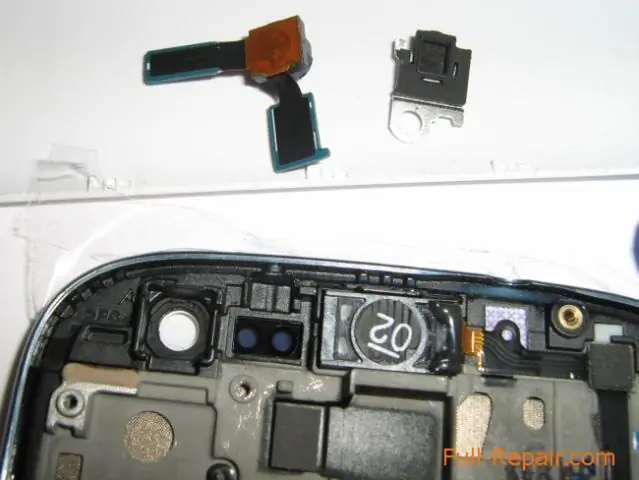
Hair dryer device, diagnostics of the main structural elements. The procedure for disassembling, replacing and repairing broken parts of a hair dryer
Which Corrugated Board Is Better To Choose For The Roof Of The House, What Needs To Be Considered, As Well As A Description Of Popular Brands With Characteristics And Reviews
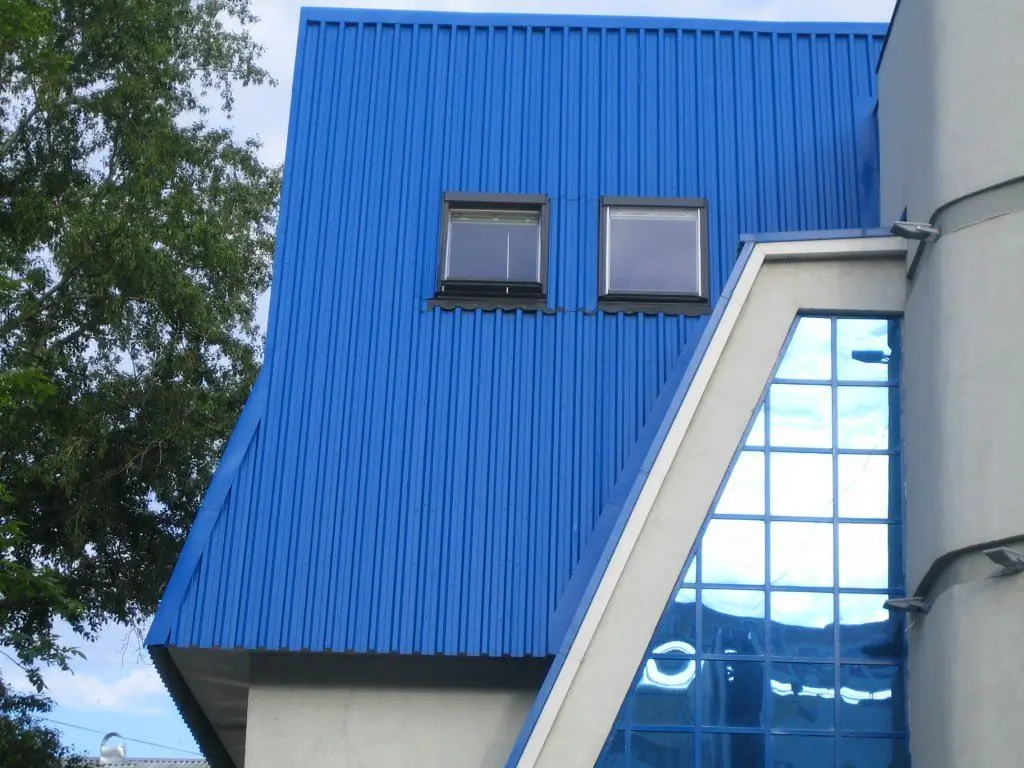
Selection rules and types of metal corrugated board for the roof of the house. What are the features of the material of different brands and manufacturers. Reviews about corrugated roofing
Interesting Facts About Cats And Cats: What Taste They Don't Feel, Do They Sweat, Do They Understand Human Speech And Answers To Other Questions
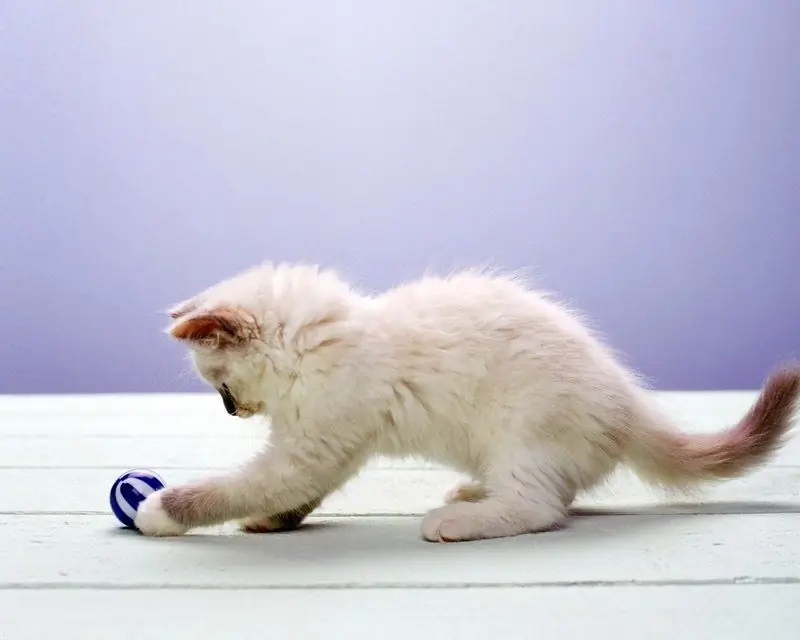
How cats differ from humans. How cats feel, hear, see, remember. Their relationship to the game. What does purr and tail wagging mean. Reviews
Whiskers In Cats And Cats: What Are They Called Correctly And Why They Are Needed, What Will Happen If You Cut Them And Why They Fall Out Or Become Brittle
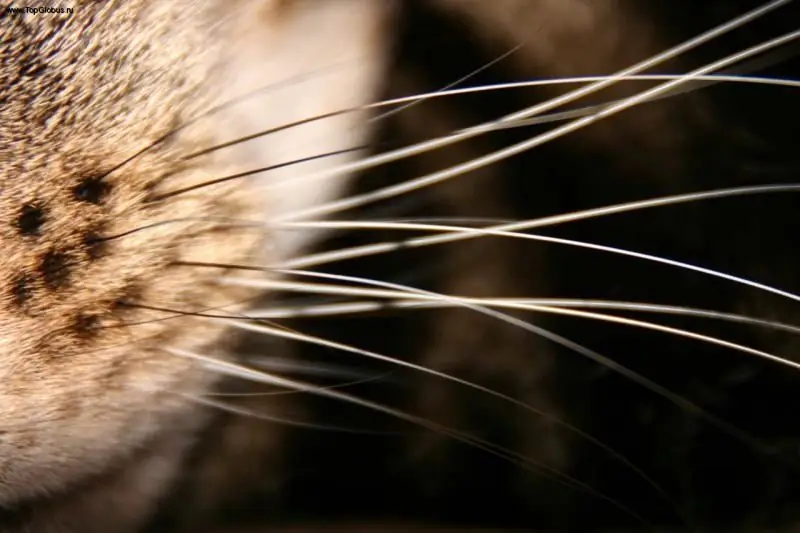
Features of the structure of the mustache in cats. What are they called and where they are located. What functions do they perform. What problems can a cat with a mustache have? Reviews
